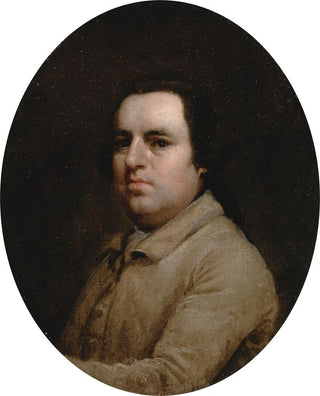Art print | Self-portrait - George Stubbs


View from behind

Frame (optional)
George Stubbs Autoportrait - Introduction captivante
The George Stubbs Autoportrait, painted in the 18th century, presents itself as an open window into the soul of an artist whose genius has left a mark on art history. This painting, both intimate and bold, immerses us in the universe of a man passionate about nature and animals. The way Stubbs depicts himself, both as an artist and an observer of the world around him, makes this work a true masterpiece of self-portraiture. It invites the viewer to explore not only the face of the artist but also the emotions and reflections that animate him, revealing a rare psychological depth.
Style and uniqueness of the work
The Stubbs Autoportrait stands out for its realistic style and impeccable technique. The artist uses plays of light and shadow to bring his face to life, while highlighting meticulous details that testify to his skill. The features are rendered with remarkable precision, each shadow and reflection contributing to a faithful and lively representation. What strikes in this work is the expression of confidence and contemplation emanating from Stubbs's gaze. His choice of colors, both sober and evocative, enhances the intensity of the image while creating an introspective atmosphere. This painting does not merely capture an image; it manages to convey an essence, a personality, and a passion for art that transcends time.
The artist and his influence
George Stubbs is often regarded as one of the greatest animal painters of his time, but his talent is not limited to the depiction of wildlife. Born in 1724, he managed to establish himself in the art world thanks to his ability to combine scientific observation with artistic sensitivity. Stubbs not only innovated in the way animals were portrayed but also influenced many artists by emphasizing the importance of studying nature. His intellectual curiosity and meticulous approach paved the way for a new era of realism in art. By painting himself, Stubbs reminds us that art is an exploration of oneself, a quest for understanding that goes beyond simple representation.

Matte finish

View from behind

Frame (optional)
George Stubbs Autoportrait - Introduction captivante
The George Stubbs Autoportrait, painted in the 18th century, presents itself as an open window into the soul of an artist whose genius has left a mark on art history. This painting, both intimate and bold, immerses us in the universe of a man passionate about nature and animals. The way Stubbs depicts himself, both as an artist and an observer of the world around him, makes this work a true masterpiece of self-portraiture. It invites the viewer to explore not only the face of the artist but also the emotions and reflections that animate him, revealing a rare psychological depth.
Style and uniqueness of the work
The Stubbs Autoportrait stands out for its realistic style and impeccable technique. The artist uses plays of light and shadow to bring his face to life, while highlighting meticulous details that testify to his skill. The features are rendered with remarkable precision, each shadow and reflection contributing to a faithful and lively representation. What strikes in this work is the expression of confidence and contemplation emanating from Stubbs's gaze. His choice of colors, both sober and evocative, enhances the intensity of the image while creating an introspective atmosphere. This painting does not merely capture an image; it manages to convey an essence, a personality, and a passion for art that transcends time.
The artist and his influence
George Stubbs is often regarded as one of the greatest animal painters of his time, but his talent is not limited to the depiction of wildlife. Born in 1724, he managed to establish himself in the art world thanks to his ability to combine scientific observation with artistic sensitivity. Stubbs not only innovated in the way animals were portrayed but also influenced many artists by emphasizing the importance of studying nature. His intellectual curiosity and meticulous approach paved the way for a new era of realism in art. By painting himself, Stubbs reminds us that art is an exploration of oneself, a quest for understanding that goes beyond simple representation.






